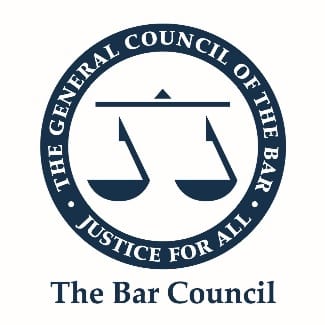James v Seymour [2023] EWHC 844 (Fam)
Judgment date: 19 April 2023
https://caselaw.nationalarchives.gov.uk/ewhc/fam/2023/844
Mostyn J. An appeal concerning the correct approach to the calculation of child maintenance liability in which Mostyn J adds to the ever-expanding repository of family law acronyms.
The mother ('M') and father ('F') had married in 2010, but separated in 2012 with the financial consequences of their divorce resolved by consent in 2014. They had two children ages 10 and 12. The application before HHJ Vincent at first instance was to vary upwards an order for spousal and child periodical payments. The mother's claim for spousal maintenance was conceded at final hearing, her having re-married. HHJ Vincent ordered, inter alia:
- child periodical payments at £1,100 per child per month;
- father to pay school fees, extras and travel;
- costs order against the mother.
Mostyn J heard the application for permission to apply and:
- granted permission to appeal on Ground 1, but dismissed the appeal; and
- refused permission to appeal on Grounds 2 and 3.
Ground 1: the judge failed to follow the approach set down in leading authorities that the ‘starting point’ for a child maintenance calculation should be the figure given by the CMS formula up to incomes of £650,000.
Mostyn J first summarised the development of jurisprudence relating to child support maintenance ('CSM') (see GW v RW [2003] EWHC 611 (Fam); Re M-M (Schedule 1 Provision) [2014] EWCA Civ 276, [2014] 2 FLR 1391; Re TW & TM (Minors) [2015] EWHC 3054 (Fam); CB v KB [2019] EWFC 78; Collardeau-Fuchs v Fuchs [2022] EWFC and Re Z (No 4) (Schedule 1 award) [2023] EWFC 25.
Mostyn J’s formula expounded in CB v KB was criticised by Moor J in CMX v EJX (French Marriage Contract) [2022] EWFC 136 at [86] for the consequential and unrealistic disparity between what a receiving parent will receive for one child, as opposed to four children. Mostyn J accepted Moor J’s criticism and exemplifies the disparity at [37], demonstrating that a payee receiving CSM from a payor earning £650,000 would receive £60,000 for a single child, £40,000 for each of two children and £33,000 for each of three children. But a single child does not cost 80% more than each of a trio of children. Under the adjusted formula (see below), a payee would receive £27,100, £25,000 or £23,200, respectively, before further adjustment reflecting the appropriate level of shared care.
The other criticism of the CB v KB methodology is that it often leads to awards significantly greater than the courts might award in conventional CSM cases. In departing from CB v KB, Mostyn J concluded that:
'the headline figures produced by an extension of the formula to incomes in the range £156,001–£650,000 are unrealistically high and are in my opinion unhelpful as starting points'; [38].
Arising from this judgment is a new Adjusted Formula Methodology ('AFM') and Child Support Starting Point ('CSSP') (see the Appendix to the judgment, and the tables contained therein, which are essential reading).
How does it work?
First, calculate the payor’s gross ‘exigible’ income ('E'):
E = (G x (1-Z)) – P – (S ÷ 0.55)
‘G’ is the payor’s gross income as disclosed in their most recent P60 or tax return; ‘Z’ is the reducing factor referable to the number of children living in the payor’s household (as stipulated in the statutory formula the factors are 0.11 (one child in his household), 0.14 (two such children) and 0.16 (three such children); ‘P’ is the amount of pension payments currently being paid and ‘S’ is the amount of school fees and extras currently being paid (not currently deducted under the statutory formula).
Then, apply the statutory formula to the first £156,000. That is £15,300 for a single child, £10,200 for each of two children and £8,400 for each of three children. These figures do not change.
Next, apply a tariff (by multiplying by 2.4% for a single child and 3% for each of two or three children) to the exigible income above £156,000 (e.g. if E = £255,000, multiply the difference (£99,000) by 0.024 (or 2.4%) for a single child, or 0.03 (or 3%) for each of two or three children).
Demonstration
Applying the formula to a single child where the payor’s exigible income is calculated at £255,000:
| Applying statutory formula to first £156,000 | £15,300 |
| Difference between exigible income & £156,000 | £99,000 |
| Tariff | 2.4% |
| CSSP (before deduction for shared care) | **£17,676** |
From that figure, make the appropriate deduction to reflect the level of shared care (1 – (number of nights ÷ 365)) and round to the nearest hundred.
If the child spent 52 nights per year with the payor, the outcome would be **£15,157.78 **(or £15,200).
[N.B. this demonstration illustrates Mostyn J’s workings. But fear not, litigants and lawyers need only calculate the payor’s exigible income and then input that figure to the Tables set out in the appendix to this judgment to calculate the appropriate CSSP]
However, if:
a. there are 4 or more children for whom CSM is to be paid, or
b. E is more than £650,000, or
c. F’s income is largely unearned, or
d. F lives on capital
then use of the AFM is not apt, so no CSSP should be used and the child maintenance should be worked out by applying s. 25(3) Matrimonial Causes Act 1973 or para 4(1) of Schedule 1 of the Children Act 1989.
In variation cases, the CSSP should be the value of the current order adjusted by the higher of CPI or RPI. (see an example of how this might apply at [46]).
Ground 2: the assessment of the quantum of child maintenance was too low and insufficient (or no) weight was placed on the inevitable disparity of lifestyle as a consequence.
Permission to appeal was refused because any such argument or comparison is only meaningful in HESCSA cases and this was not one.
Ground 3: the order as to costs was wrong.
The judge endorsed HHJ Vincent’s summary of the applicable principles on costs at [58]–[59] and her application to M’s litigation conduct. Permission to appeal was refused.
The only point of disagreement between Mostyn J and HHJ Vincent concerned the issue of anonymisation. See paragraphs [65]–[71] for discussion of that issue. Clearly, Mostyn J saw no reason to anonymise his judgment.





